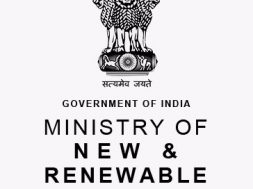
The Indian government plans 175 GW of non-hydro renewable capacity by 2022, which would be made up of 60 GW onshore wind, 60 GW utility-scale solar, 10 GW bioenergy, 5 GW small hydro and 40 GW of rooftop solar.
Rock-bottom solar power tariffs might spell good news for consumers and the environment alike, but for developers, it is now a matter of concern. Ironically, the problem is of their own making to a large extent. With aggressive bidding, solar power tariffs have been pulled down to Rs 2.42-2.65 per unit in the latest rounds, and this has made it difficult for companies to stay afloat. As a result, they have been sourcing inferior quality equipment like rooftop solar panels, inverters and mounting structures.
As Niranjan Patil, head of Bengaluru-based renewable energy consulting and audit firm Lavancha, points out, this has resulted in complaints of cracked solar panels and corrosion of components in less than two-three years of installation across the country.
And while suppliers offer guarantees and warranties for replacement, enforcing these becomes a challenge when products are sourced from tier-2 and tier-3 producers in China. Sources indicate that smaller suppliers vanishing in a few years is also not uncommon. Gyanesh Chaudhary, MD and CEO of Vikram Solar, India’s largest supplier of Solar PV panels, says the problem has always existed, but is likely to become a serious issue when many more projects come on-stream over the next couple of years.
Industry leaders like Sumant Sinha, founder & CEO of ReNew Power, had earlier warned that those bidding aggressively would eventually run into trouble. He had portended that given the business economics, many of the projects would become unprofitable. Industry experts also feel that the auction system might have helped bring down tariffs, but the aggressive bidding is not good for the health of the developers and the sector. Incidentally, industry majors like ReNew Power and Tata Power have not been very successful in recent tenders floated by state power bodies due to their higher bids.
“Developers always want to make profits and may even flip projects in a few years of operations. Here the role of a financier is critical. They need to set norms for minimum requirement and white-listing of suppliers. Banks should follow strict due diligence and visit plants for first-hand white-listing of suppliers and funding of projects,” says Chaudhary.
Some of the new-age financiers with huge exposure are doing it, but others also need to follow the example, he adds. He suggests that India needs to learn from Germany, where 30-35 per cent of electricity comes from renewables and the sector operates on an auto-correct mode. Even as steps to correct the situation can help curtail the problem in future, some solar developers are already looking to sell their non-performing assets. “Developers are now looking to sell-off projects in less than two-and-half years of operation,” an industry official said on condition of anonymity.
“There is every possibility the panels will fail to meet the committed targets of generation and could be non-viable to service debt and create returns on investments, turning into a non-performing asset for developers, as well as investors,” says Patil of Lavancha. Several instances of panels cracking and inverters catching fire have been reported by developers. Even more have seen modules showing degradation of 20-25 per cent in just about two years. Many of these instances have been reported from Karnataka, Tamil Nadu and Telangana and even from Rajasthan and Uttar Pradesh. “It is an indicator of how compromise in module quality is going to result in a problem for developers in the coming years,” said another official on condition of anonymity.
Some even fear this could scare away investors who might be keen on investing in the renewable energy sector in the country. “For a sector (power) that already has huge NPAs and stranded assets in coal and gas-based plants, we do not want a similar situation to be repeated in the solar sector. This will send a wrong signal to investors, who recently gained confidence to invest in the solar sector,” says Kunal Chandra, MD of Proinso India, distributors of solar equipment.
The Indian government plans 175 GW of non-hydro renewable capacity by 2022, which would be made up of 60 GW onshore wind, 60 GW utility-scale solar, 10 GW bioenergy, 5 GW small hydro and 40 GW of rooftop solar. At present, this figure stands at just 60 GW. India presently boasts a capacity of 16 GW of solar power, which analysts expect could scale up to 20 GW by the end of the current fiscal.















